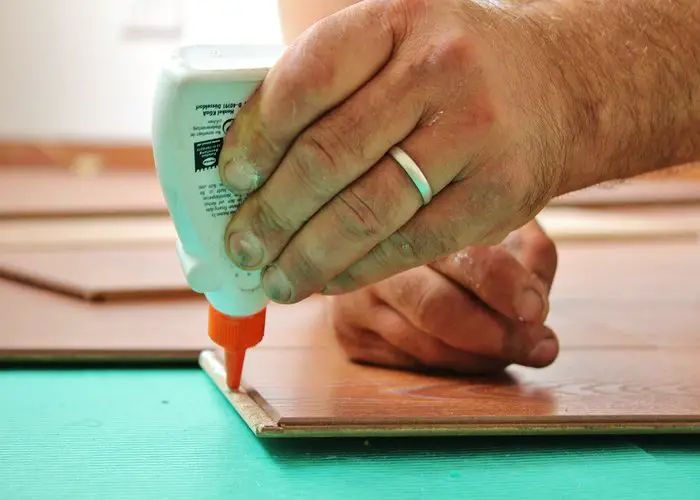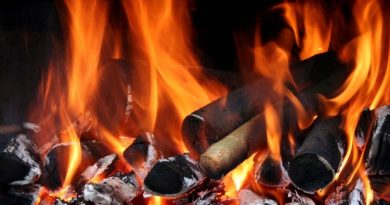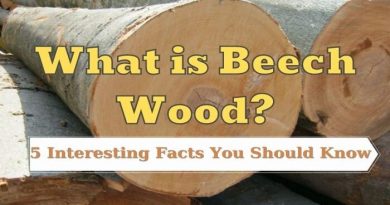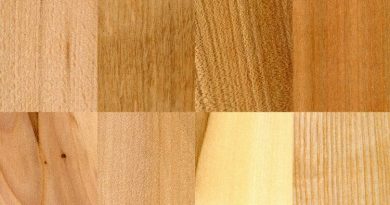What is PVA glue?
When working with wood, PVA carpentry glue confidently takes the top of the list among all known adhesives. But everyone including myself is asking What is PVA glue?
So i did a little research!
Polyvinyl acetate (PVA) adhesive is the most common synthetic wood glue. Colorless and odorless, PVA glue is suitable for well-ventilated areas because it dries quickly at room temperature. Some PVA adhesives are not waterproof, so consult your product’s instructions before use.
PVA glue is one of the most common types of glue, used for both stationery and finishing. By the way, the time has come to discover the secret: PVA means polyvinyl acetate. It is this substance in solution with water (with some additives) which forms the well-known adhesive composition.
PVA glue is a thick mixture with a slight odor of vinyl alcohol. The classic composition of the glue is completely harmless from an environmental point of view and poses no risk for the skin of the hands. Therefore, it is widely used for household purposes, including for children’s applications.
Naturally, glue marks can be produced with additional components which are not so safe.
Typically, these are specific compositions that have a clear purpose for certain types of work. Most manufacturers produce conventional, universal PVA containing no potentially harmful components.
Searching online, I found out there are three types of PVA Glue.
Types of PVA Glue:
PVA glues (Poly-Vinyl-Acetate)
PVA glues are the most common for use in carpentry. Although the market is the almost exclusive monopoly of normal PVA glues (also called white ), in reality there are three types: normal or white , aliphatic or yellow and interlacing or cross-linking.
All three types have very balanced characteristics, which make PVA glues truly ideal for gluing wood, and which consequently are the reason for their great diffusion.
They are easy to use, have a fast action time, dry quickly (typically in 3 hours), clean with water, are non-toxic, and meet almost all needs in the carpentry shop.
Beware, however, that when liquid, they suffer from the intense cold. They also have low resistance to transverse stress (that is, they stretch when subjected to a strong load tangent to the gluing line), and for this reason PVA glue should never be used in structural work without some form of mechanical bond (such as, for example, to form beams under load).
Normal PVA glue (white)
The white PVA glue is for general use, in particular with excellent flexibility and tensile strength.
Negative characteristics are the fact that, when dry, it forms a rubbery gluing line, which softens with the heat of the friction of the sandpaper, flooding it and making it quickly unusable.
In addition, normal PVA glues do not have any resistance to humidity, and consequently should only be used for indoor work.
On the market there is an almost infinite plethora of brands of normal PVA and its minimal variations, although the base polymer is manufactured by a very limited number of chemical giants with a well-known name.
A commercial name for this type of glue that has made history is the very famous Vinavil, originally a Montedison patent. Many of the normal PVA glues meet the European standards EN204 D2.
Aliphatic PVA glue (yellow)
Aliphatic resins are probably the best joinery glues available today. Technically, both aliphatic and normal PVA glues contain the same polymer: polyvinyl acetate.
Aliphatic PVA glue is often colored yellow, the only way to distinguish it from the normal cousin.
With the latter, the aliphatic glues share a large number of characteristics, such as high tensile strength, easy cleaning and fast attachment.
The aliphatic glues have improved resistance to humidity and transverse stress, more decisive stickiness and better workability of the sandpaper (when dry, it does not form a rubbery gluing line like normal PVA).
However, they have a relatively short retention period; after about a year they are almost always too dense to be used.
As far as the addition of water can be used to recover a somewhat stale can from use, do not overdo it: a can with filamentous glue is definitely worth throwing away.
Cross-linking PVA glue
These are the latest generation PVA glues, very common in North America, rare or simply not available in Italy.
Polycompatible one-component PVA, is very resistant to water, but is not suitable for permanently submerged gluing. PVA glue has a high stickiness, dries quickly and well resists often and heat.
It can be worked without flooding the glass paper. PVA glue is cleaned with water only when in liquid form.
It is a general purpose glue, and is particularly suitable for external doors and furnishings. Titebond II glue , produced by the Franklin company , is a product well known in the USA and Canada.
Where is PVA wood glue used?
Adhesive mixtures based on polyvinyl acetate(PVA) are actively used in any woodworking and carpentry. The main areas of application of PVA glue include:
- Production and furniture repair. The material neatly and reliably glues interior items made of wood, MDF, chipboard, fixes plywood, furniture panels and accessories.
- Interior decoration . Thanks to the joiner’s single-component PVA glue, you can glue cork panels, parquet, apply wood veneer to the surface, fix the carpet and linoleum.
The glue works fine on porous surfaces such as wood, even when combined with paper, textiles or laminates.
The PVA adhesives are in fact formulated precisely to penetrate the wood fibers, so that, once drying is complete, the gluing can be even stronger than the wood itself.
The main advantages of PVA glue
- Good bonding capacity;
- Resistance to combustion and explosion safety;
- Water resistance (after drying);
- The absence of toxic components and total safety, including for children;
- Practically does not form a shrinkage during drying;
- Fills the space well (slits, lumens);
- It is very soluble in solvents, which facilitates its elimination if necessary.
- PVA glue has a relatively low cost, which makes it available to any segment of the population in almost any volume.
How long does PVA glue dry?
The answer is standard, you should see the instructions on the label. And if there isn’t one, you should know the following:
In general, PVA glue dries during the day. 24 hours give an almost complete drying guarantee.
However, not everything is so simple. The drying time on PVA glue may depend on the following factors:
- Of the temperature. At low temperatures, this increases.
- The area of the parts to be glued. The larger it is, the longer the freezing time.
- Load applied to the bonding site. Thus, parts under pressure or in a vice dry faster.
- Chemical composition.
Usually 95% of the PVA glue is actually polyvinyl acetate itself. The remaining 5% are plasticizer, which also affect product performance.
It doesn’t matter how clean the work surfaces are. Dust and dirt must be removed from them.
Advantages of PVA Glue
- They have excellent adhesion to many surfaces;
- A remarkable internal cohesion;
- PVA glue penetrate deeply into the fibers of wood and porous materials;
- They guarantee long-lasting gluing and adequate sliding;
- PVA glue has good compatibility with resins, polymers, plasticizes and solvents; they are easy to use and well balanced in formulation;
- PVA have a fairly fast action;
- PVA glue drys well without catalysts and can be used cold and hot;
- They are cleaned with water when they are in liquid form;
- PVA glue is not toxic even if accidentally ingested and do not release poisonous gas;
- They are immediately available and do not require any particular preparation;
- They have excellent flexibility and tensile strength.
Disadvantages of PVA glue.
Some disadvantages of vinyl glue are very well known, since it is not suitable for any type of gluing:
- It is necessary to carefully evaluate its characteristics in order to choose the best alternative.
- In the presence of water, PVA glue tends to soften and return.
- There are, however, special resins to be added that facilitate hardening and water resistance.
- In the presence of high direct temperatures (starting from 180 ° C) the vinyl glues return as liquid as any thermoplastic glue.
- In the presence of temperatures below 0 ° C the aqueous solution decant and calcify.
- Another negative aspect is that the aqueous solution, if excessive, can swell some types of extremely porous delicate surfaces (for example, chipboard panels).
How to Use PVA Glue

If you choose the right glue and carefully follow the drying procedure, gluing wood will be a breeze.
Whether you want to stick wood on plastic, metal or concrete, the process is similar. Follow these simple steps to use PVA glue and other glues:
- Apply PVA glue to the two surfaces of the wood to be glued. Use a cloth to immediately wipe away any excess.
- Apply the wood glue in a thin and consistent layer using a brush or a plastic spatula.
- Attach the pieces together . You can slightly move the pieces back and forth to even out the layer and release the air bubbles.
- Use a clamp to secure the parts.
- Let the glued parts act for the pressing time recommended in the instructions.
- Sand any excess dried glue.
Want to stick wood to concrete? Here is an easy tutorial to show you exactly how you can do it!
How to Make Real PVA Glue Yourself?
PVA is an adhesive widely used in various sectors and, without exaggerating, it is one of the most popular.
And even if this product can be purchased without problems, self-production is not difficult, which will help in a situation where it is urgently necessary to glue something and the funds were not at hand.
Is it possible to make PVA glue at home?
Polyvinyl acetate, more commonly known as PVA glue, is produced on an industrial scale using special equipment. In the mortar mixer, the polyvinyl acetate dispersion and the filler are mixed.
There are various types of this glue (clerical, for wallpaper, universal, etc.) and, consequently, recipes for making.
It is difficult to accurately comply with the PVA formulation at home, but it is not at all difficult to produce an analogue that is practically inferior in its properties and characteristics.
How can I make PVA glue?
There are many recipes for self-preparation of the PVA glue. I present one of the most easily made and convenient recipes.
Almost all of whose ingredients are sold in a pharmacy (except for photographic gelatin, which you have to look for in a specialized shop, as well as flour.
If suddenly you don’t find it at home, you will surely find it in the nearest grocery store).
So to prepare the PVA you need to take:
- 1-1.2 l of distilled water;
- 20-25 ml of ethyl alcohol;
- 4-5 g of glycerin;
- 5-6 g of photographic gelatin;
- 100-120 g of flour.
The jelly is immersed for a day in ordinary hot water from a tap according to the instructions, after which it is dissolved in a steam bath.
Flour and distilled water are added and the mixture is kept on fire until it becomes dense sour cream. During boiling, the mixture must be constantly stirred.
When the necessary consistency is reached, the mixture is removed from the heat and slightly cooled.
Next, you need to add alcohol and glycerin and mix everything thoroughly so that there are no lumps.
If it is still not possible to prevent the formation of lumps (they can also appear during the boiling phase), it is possible to pass the glue through a sieve.
When the mass has completely cooled down, it can be used to glue paper, wood and other parts for which PVA is usually used.
You can keep a homemade product for no longer than six months. Ideal storage temperature + 10-15 degrees.
Nothing bad will happen if the PVA glue remains at room temperature, but when the temperature is negative, the “functionality” of the product decreases drastically. It will be usable for no more than a month.
Conclusion
Due to its ability to moisten wood pores well, PVA carpentry glue is considered an ideal solution for working with any kind of wood, including hard and exotic species.
After application, it becomes completely transparent, so it is almost invisible on wooden structures.
The time of complete hardening of the PVA glue depends on the moisture content of the wood, but on average it dries in 24 hours.




